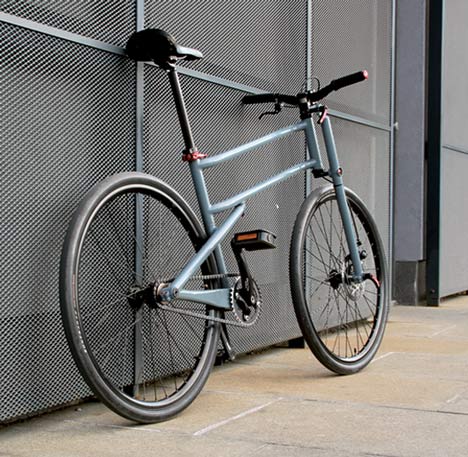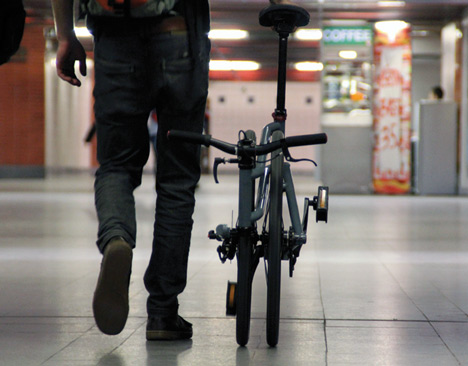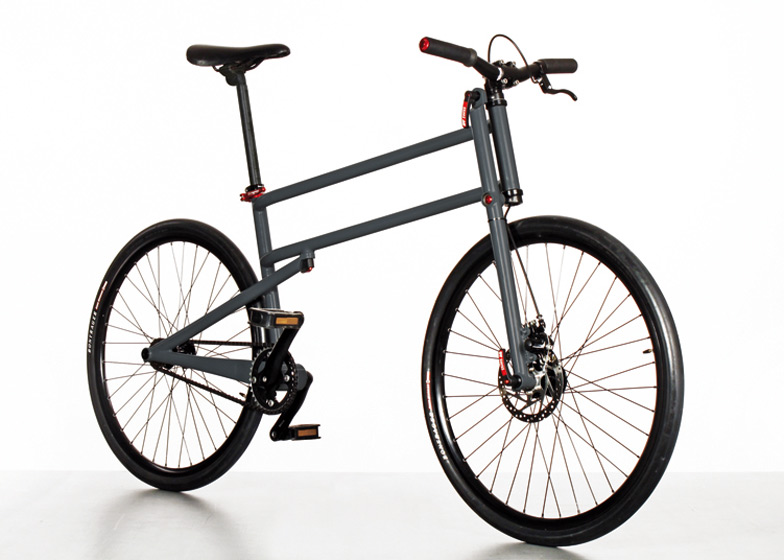Unlike other folding bicycles, this one by Czech designer Mikuláš Novotný has full-size wheels and can be rolled home rather than carried.

The 26-inch wheels of Folder are nearly twice the size of those usually seen on folding bicycles, and can still roll along when the bicycle is folded up.

"Thanks to this solution, you don't have to carry the folded bike," the designer explained to Dezeen. "Just grab the saddle and pull it beside you with one hand."

The larger tyres also make the bicycle easier to steer and safer on bumpy roads.
Novotný came up with the design while studying at the Academy of Arts, Architecture and Design in Prague.
See all our stories about bicycles »
See all our stories related to cycling »
See all our stories about transport »
Photographs are by Matej Cincera.
Here's some more information from the designer:
Folder is a folding city bicycle with 26-inch tyres. It's greatest advantage is that it keeps its mobility even after folding. Within a minute it can be transformed into a compact barrow Which you can take with you to the underground, bus, tram, elevator or wherever you want.
Due to its large wheels, it is also possible to take the bicycle up and down stairs just by pulling. This function is enabled by its unique construction and a number of innovative solutions. The folding system is based on turning the back structure around the seat post and turning the fork around its shoulder. Finally both wheel hubs are joined and fixed by a central plug. There are three quick-releases to be opened and closed.
The diameters of the folded bike are 106 x 28 x 75 centimetres.
During the design process I concentrated on the simplicity and reliability of the final product. The frame of the prototype is made from chromium-molybdenum thin-wall tubes, which are cheap, everlasting and easily reparable. As for brakes, there is a one - eventually two - disc brake system. In addition, it's possible to lock up Folder by pulling a lock through the both wheels and frame.
This new kind of city folding bike was designed as part of a project at the Academy of Arts, Architecture and Design in Prague, and is the result of my reflections on movement in the city by self-power.

